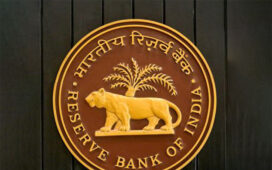-
By Crystal Hsu / Staff reporter
Taiwan’s foreign exchange reserves fell by US$563 million last month to US$597.87 billion, as a broadly stronger US dollar reduced the value of non-dollar assets, the central bank said yesterday.
The decline, while modest, reflects renewed investor focus on US macroeconomic fundamentals and a normalization in global capital flows, Department of Foreign Exchange Director-General Eugene Tsai (蔡炯民) told reporters.
The greenback gained more than 3 percent during the month, weighing on holdings denominated in euros, pounds, yen and other currencies. The New Taiwan dollar depreciated 2.47 percent against the greenback during the same period.

Photo: George Tsorng, Taipei
The drop in reserves was not due to capital outflows or heavy foreign exchange market intervention, but rather valuation effects amid a return to fundamentals-based pricing in the currency markets, he said.
Citing earlier pressure on the US dollar this year due to fears of a potential debt default tied to US Treasury maturities in June, as well as speculation surrounding a so-called “Mar-a-Lago Accord,” Tsai said the theory — suggesting coordinated efforts to weaken the US dollar — is unfounded.
With those concerns easing, the market has returned to pricing currencies based on economic data, interest rate differentials and the US dollar’s role as a global reserve currency, he said.
Despite the decline in foreign exchange reserves, capital inflows remained robust, he added.
Foreign investors were net buyers of Taiwanese equities last month, recording more than NT$200 billion (US$6.68 billion) in net inflows, as the benchmark TAIEX rose 5.78 percent during the month.
“Speculative capital has retreated, and the US dollar has regained strength and stability,” Tsai said, adding that foreign capital flows have become more aligned and orderly compared with the volatility seen in prior months.
The central bank previously attributed sharp gains in the NT dollar to speculative capital inflows and panic selling of US dollars by local exporters and financial institutions with significant foreign currency exposures.
The central bank continues to communicate with foreign banks and institutional investors to ensure that funds are used in accordance with their declared purposes, he said.
The central bank briefly intervened in the foreign exchange market in early last month to reduce volatility, but largely remained on the sidelines as market conditions later stabilized, he added.
The US dollar is unlikely to depreciate significantly over the remainder of the year, with markets having already priced in 50 basis points of interest rate cuts from the US Federal Reserve and “reciprocal” tariff measures largely resolved, Tsai said.
“The US dollar remains fundamentally supported by higher interest rates, compared with other major currencies,” Tsai said, suggesting that the NT dollar might hold steady at about NT$29.9 with mild depreciation pressure, if current trends persist.



